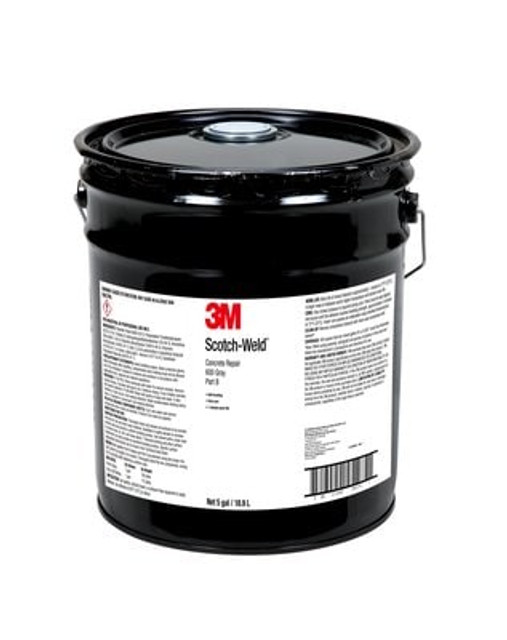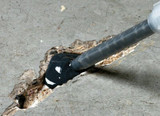

3M Products & Supplies
3M Scotch-Weld Concrete Repair 600, Gray, Self-Leveling, Part B, 5 Gallon (Pail), Drum
Cures to any Depth without Cracking
Our 3M™ Scotch-Weld™ Concrete Repair DP600 is ideal for repairing cracks and spalls in concrete and masonry, pool decks and patios, custom tapping of bolts and screws into a variety of substrates, and setting anchors in horizontal surfaces. The two-part adhesive bonds through a chemical reaction that cures to any depth without cracking. And once mixed our formula resists weathering, expansion and contraction. This product is gray in color, and may also be sanded to eliminate rough edges, for refinement, or to provide a smoother finish.
Recommended Applications
Dispenses with a Regular Caulk Gun or Duo-Pak Cartridge System
Our 3M™ Scotch-Weld™ Concrete Repair DP600 is a two-part component system. Our Duo-Pak cartridge keeps the components separate until ready for mixing to maximize working time. With the squeeze of a trigger the components are automatically mixed with our innovative mixing nozzle and easily dispensed precisely where needed without an unwanted mess. The bubble-free liquid begins curing immediately while also self-leveling to create a tough, non-brittle bond. Our fast curing concrete repair formula provides a one minute work life.
Understanding Urethane Adhesives
Two part urethane adhesives cure chemically, rather than relying on moisture from the air. Because of this, they can cure quickly with no depth of cure issues in contrast to one-part urethane adhesive sealants. Urethane adhesives will bond most common materials such as wood, metals, rubbers, leather, tile and glass, many plastics, concrete and more.
The versatility of urethane adhesives is exhibited in the different formulations that have varying cured properties such as different levels of stiffness or flexibility, open time and cure speed, and hardness. They can cure to a relatively rigid or highly flexible state to meet a wide range of requirements. In either finished state, urethane adhesives will maintain bond strength integrity through variable environmental factors such as temperature, moisture and chemical exposure.